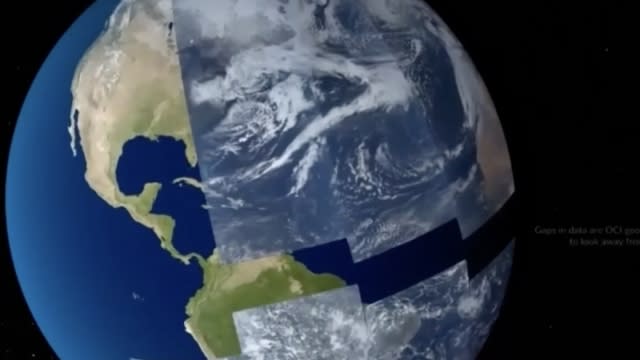We know that NASA is primarily responsible for launching rockets and humans into outer space, but for about 60 years, NASA has also played a vital role in understanding the spacecraft that humans call home.
Data from NASA’s newest Earth-observing satellite will provide insights into ocean health, air quality and the impacts of climate change.
Ahead of Earth Day on April 22, NASA officials in Washington on Friday documented how climate change is affecting the planet, this time using data from a program that monitors changes in oceans and air from space. Earth Day draws attention to the negative impact of human activities on the environment and asks people to focus on things they can do to take better care of the planet.
“That’s our home, our planet. It’s the only planet we have and we want to keep it,” said NASA Administrator Bill Nelson.
Nielsen and two officials from NASA’s Earth Science Division showed off some of the first photos from the agency’s PACE satellite. PACE stands for Plankton, Aerosols, Clouds and Marine Ecosystems. The instrument records data on all the elements that make up the acronym to provide information on how humans are affecting Earth’s climate.
Nelson, a former astronaut and a U.S. senator from Florida, added that his experience observing the blue planet from space has made him “become more of an environmentalist when going into space.”
The PACE satellite is about 250 miles from Earth and was launched into orbit in February, according to NASA. “We have an unprecedented view of Earth,” said Tom Wagner, associate administrator for Earth Operations in NASA’s Earth Science Division.
Instruments on board will “collect data to help researchers better understand how the ocean and atmosphere exchange carbon dioxide, measure atmospheric variables related to air quality and climate, and monitor ocean health by studying phytoplankton, microscopic plants and algae.”
Climate change is affecting Earth’s oceans in many ways, from rising sea levels to marine heat waves to biodiversity loss. NASA said PACE allows researchers to study these effects on phytoplankton, which play a key role in the global carbon cycle by absorbing atmospheric carbon dioxide and converting it into cellular material. These tiny organisms are the foundation of larger aquatic and global ecosystems. “It’s the smallest things that have the biggest impact,” said Karen St. Germain, NASA Earth science director.
Research has linked human activities such as industrial-scale farming to algal blooms. Where the Mississippi River flows into the Gulf of Mexico, silt rich in phosphorus substrates for plant fertilizers flows out, causing algae blooms. But as a result, the overgrowth depletes oxygen in the water, causing what oceanographers call “algae blooms.” . Dead zones,” areas where fish and other wildlife cannot survive.
PACE can observe the climate effects of wildfires and the pollutants that make up particulates and aerosols. It also studies key variables in cloud formation and can study how oceans affect terrain.
NASA said the observations improve monitoring of ocean health, air quality and climate change. We’re able to better manage what we have,” Nelson said.
PACE data is open to scientists around the world for study and may lead to a better understanding of humanity’s impact on the planet.
See more: Study shows climate change could reduce global income by nearly 20%
#NASAs #latest #satellite #important #data #climate #change #trends
Image Source : www.aol.com
